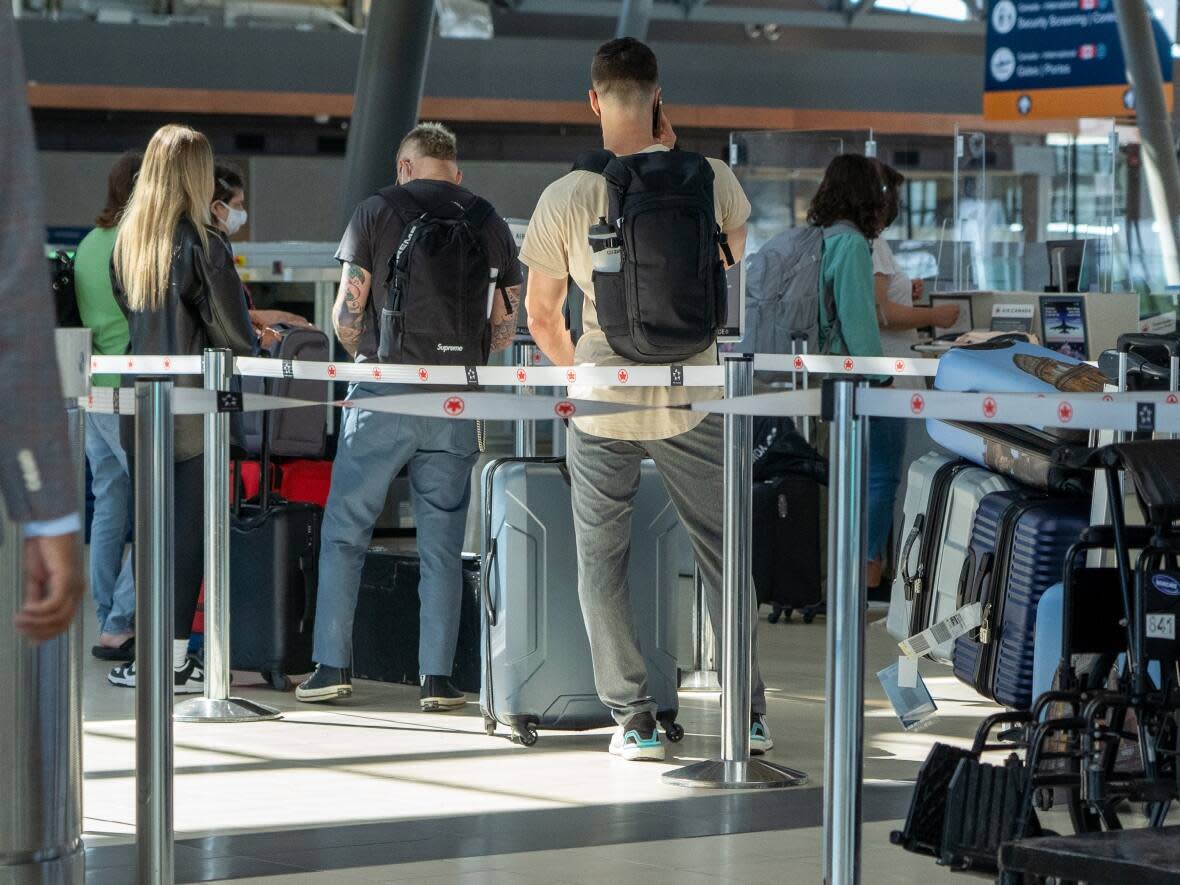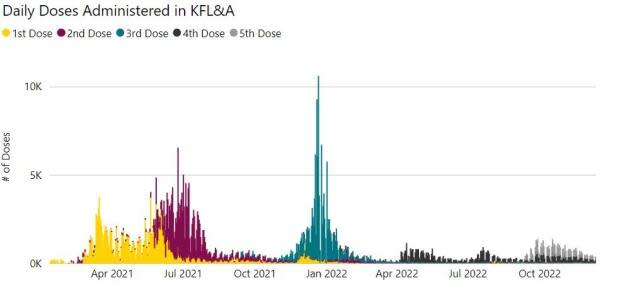Behind the numbers: 3 COVID-19 takeaways from 2022

In 2022, Omicron variants and subvariants reigned, rules largely eased into recommendations, and the Ottawa-Gatineau region saw a shift in the COVID-19 pandemic.
One local health leader said in an interview this month there was a turning point in the middle of spring that evened out the previous spikes and valleys of the various pandemic waves.
At that point, a few decent months in autumn 2021 — driven by good uptake of vaccines — had been replaced by a few months of the more-infectious Omicron.
"Going into kind of April and May, we actually saw what I call 'the wall of immunity' being developed by what's called hybrid immunity," said Dr. Paul Roumeliotis, medical oficer of health for the Eastern Ontario Health Unit.
"You had millions of people who got infected despite being vaccinated — but not hospitalized, fortunately — and at the same time, a whole slew of the population got protected by vaccines."
CBC honed in on three COVID-19 trends from the past year that stuck out in weekly updates from public health units.
This piece does not account for the autumn rise of the respiratory syncytial virus (RSV) and the flu, which have caused more problems late in 2022, such as immense pressure on children's hospitals.
Region's deadliest year
There have been gaps in that wall of immunity, though. People who can't mount as strong of a defence account for most of the deaths locally after contracting COVID.
This past year has included nearly half of the more than 2,000 reported COVID-19 deaths in the seven local health authorities.
Six of those seven reported more of these deaths this year than in either 2020 or 2021. Five of them reported more than in 2020 and 2021 combined.
The Renfrew County and District Health Unit has seen about 85 per cent of its COVID deaths in 2022. Two others sit around 80 per cent: Hastings Prince Edward Public Health in the Belleville area and Kingston, Frontenac and Lennox & Addington Public Health.
Ottawa is the only health unit in the region that hasn't reported more COVID deaths in 2022, but it's close.
Ottawa-area COVID-19 deaths
CBC News spoke to multiple physicians for a story last month about who's dying with COVID-19 in late 2022.
"It's older folks, it's those with immune-compromised states on chemotherapy with advanced cancer, frail comorbidities, that are ending up getting sick with COVID-related illness," said Dr. Bram Rochwerg, a critical care physician in Hamilton, Ont.
"It's extremely rare to see somebody that doesn't have these comorbidities that ends up in the ICU sick with COVID."
Raising the floor
Coronavirus wastewater readings and COVID hospitalizations each show the worst spikes of the pandemic came in 2022, and there was fewer lulls between waves. This year's longest lull generally happened in May and June, but worsened in July.
Ottawa also did not go more than 100 days in 2022 with fewer than 20 active, local COVID hospital patients. Ottawa reached 175 days in 2021, and 125 in 2020 — if you start the count when the city first reached 20 hospital patients with COVID.

There's a similar story in Ottawa's wastewater measurements.
The weekly average level in 2021 was in the double digits — which is fairly low — for almost 150 days. The level never got that low in 2022.

"Between waves [earlier in the year] we kind of went down, but what we're seeing now is ... we're not going as low as we want to be or used to be, we're kind of hovering," Roumeliotis said, in a weekly video update late last month, referring to general wastewater trends across Ontario.
"That's what we'll be seeing. Progressively that will get lower and lower as we vaccinate … We're still in a pandemic but we're in a much better situation when it comes to COVID-19."
Vaccine consistency
This year saw updated booster doses that are better tailored for current coronavirus variants and the approval of vaccines for children as young as six months old.
Local demand for all COVID vaccines also evened out.
Once you set aside January's rush for boosters during the last period of centralized school, restaurant and gym closures, OPH generally gave out between 4,000 and 20,000 doses a week from February onward.
In 2021, as many as 132,700 doses were administered in early July, which was when second dose eligibility expanded.
There's a similar dynamic in the Kingston and Belleville areas, and in Leeds, Grenville and Lanark counties.

In Ottawa, 2022 saw more than 700,000 COVID vaccine doses given this year compared to about two million the year previous.


